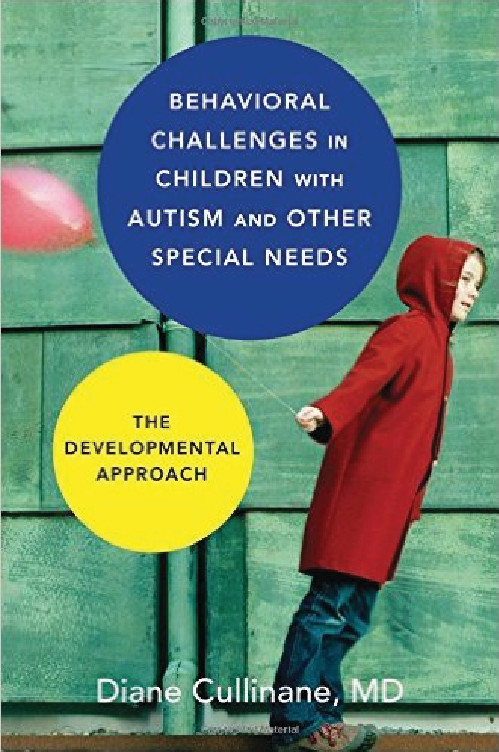Autism is a complex neurodevelopmental disorder with challenging behavioral sequelae. It seldom follows a linear course and often exacts a toll on the children and families who struggle with it. Understanding how autism is manifested throughout development is the unique perspective of Diane Cullinane’s new text,
Behavioral Challenges in Children With Autism and Other Special Needs: The Developmental Approach. As a board-certified developmental pediatrician with expertise in neurodevelopmental disabilities, she creates a context for understanding and treating autism, and in this case context is everything. Cullinane moves beyond diagnosis and provides a comprehensive approach to understanding behavioral challenges through the developmental process using the DIRFloortime model created by Stanley Greenspan and Serena Wieder (
1), which focuses on development, individual differences, and relationships (DIR). Forming the cornerstone of this model are six essential milestones: shared attention, engagement, two-way communication, complex communication, symbolic ideas, and logical thinking. Deficits in these milestones create behavioral challenges.
Cullinane’s approach is presented in 11 chapters clustered into three parts: understanding behavior from a developmental perspective, challenging behavior in the moment, and creating a long-term plan. The book is written for a multidisciplinary audience, and clinicians, educators, and family members will find the straightforward, jargon-free material easy to grasp and translate into practice. However, the text stops short of addressing serious emotional disturbance comorbidity, severe behavioral compromise, and the role of medication, and the reader is left wanting more.
What makes this text refreshing is the perspective of seeing problematic behavior through a different lens that looks beyond traditional applied behavior analysis where behavior is viewed within the context of function. Instead, Cullinane’s work, her Developmental Approach, focuses on emotional maturation and views challenging behavior as constrictions in the development of emotional capacities. The remedy for challenging behavior is “increased affective interaction to strengthen a child’s emotional development.” No longer is problematic behavior the intended “target” of treatment; rather, it is the emotional skill deficit underlying the behavior. Implicit in this approach is relationship development.
Cullinane provides a three-step approach for adults to manage a child’s behavior in the moment: first, attune and organize; second, help; and third, resolve. She overlays these steps with the six milestones and offers pragmatic intervention recommendations, including environmental considerations, sensory interventions, structure, routines, language, and more. In addition, she recommends “safe holding strategies” for parents and clinicians to use if they must restrain children and ways to engage in a dialogue that promotes calming. Greater caveats and caution about physical intervention are indicated, because “safe holding strategies” often are not.
Finally, the model includes long-term planning and methods to address deficits by practicing strategies to develop the skills and achieve milestone goals. Through case vignettes, the approach is applied to different scenarios, and the reader is brought through the treatment process, culminating with how to complete treatment. The Developmental Approach offers clinicians and families a new way to understand and intervene with the childhood behavioral challenges associated with autism. Extension of this model into adulthood would be a welcome next edition.


